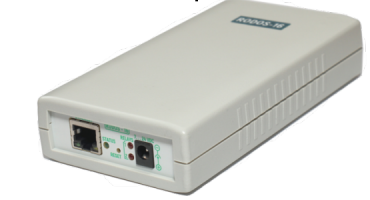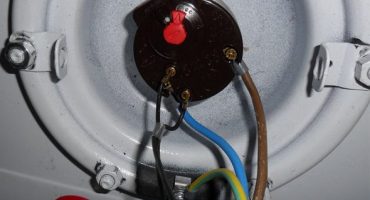Any household appliances for normal functioning require systematic care, and a water heater is no exception. Occasionally necessary disassemble and clean the boilerInspect internal parts and repair minor malfunctions. Cleaning such a bulky unit only seems complicated, you can cope with it at home without special preparation.

Piping when connecting a boiler
Why do I need to clean the boiler
Accumulative electric water heater is in constant contact with water, from which, with strong heating, magnesium and calcium salts precipitate. Chemical compounds settle on the internal elements and walls of the tank in the form of scale, white lime film and flakes. A layer of deposits of impressive thickness reduces the thermal conductivity of the heating element, as a result, the boiler heats water for a long time, and the cost of electricity increases.
Signs by which you can understand that the water heater needs to be cleaned:
- water is heated very slowly;
- extraneous sounds from the tank are heard (they are caused by the friction of scale particles);
- the quality of hot water has deteriorated: it is yellowish in color and smells unpleasant;
- the case is excessively heated;
- the appliance often turns off.
It is recommended to disassemble and flush the device every 6 to 12 months, depending on the level of water hardness and operating conditions. If the boiler is used in intensive mode with heating to the maximum, then scale deposits will appear faster in it. A clogged heater cannot transmit heat to its surrounding water and overheats, a protective relay is activated and the device turns off.

Scale boiler
If you do not pay attention to the symptoms of the problem, but only increase the heating temperature on the controller, you can achieve burnout of the heating element.
Clean the boiler: step by step instructions
The main concern of the ordinary consumer: how to clean a bulky boiler without removing it from the wall. If the contaminants are insignificant, and the task is to eliminate the scum only from the heating element, you can get by separating the support flange with a heating element. But in advanced cases, the dismantling of the entire structure can not be avoided.
Drain the water
Before starting work, be sure to unplug the power plug from the outlet in advance so that the water cools. Next, proceed with emptying the container. It is very good if the boiler is suspended directly above the bath, then the water will drain into it. Otherwise, the algorithm consists of the following actions:
- the supply of cold water to the riser is shut off;
- a cold valve is screwed near the heater;
- the hot valve on the mixer opens and part of the water drains from the tank;
- through the drain fitting, the remaining water is sent to the sewer.
If the Ariston boiler does not have a special pipe for draining water, you will have to empty the tank through the safety valve. To do this, place a bucket or a large basin under the heater and remove the hot water hose. Unscrew the valve with caution and wait until the accumulating air begins to displace water from the tank. This is a long process, be patient.
In order not to experience difficulties over and over again, it is better to once properly assemble the structure and provide for the presence of tees and cranes.

Branch pipe for water discharge
We remove a scum from TENA
So, the water was drained, the next step is to separate the boiler from the wall. This will require an assistant, since the roomy Termeks unit weighs a lot. You will need to disconnect the tubes, unscrew the nuts and remove the tank from the bracket, slightly lifting it. But now you can position the tank where convenient, and proceed with the dismantling of the heater.
Follow the steps in sequence:
- open the front cover by unscrewing the screws;
- Take a photo of the location of the wires;
- disconnect the wiring;
- remove the mounting of the support flange and remove the heater;
- check the condition of the magnesium anode; it may be time to replace it.
The mounting of the heating element in the boilers varies depending on the model and manufacturer. At the Ariston heater, a nut is loosened and a corner is removed. The lid is loosened and inserted into the tank, the heater is removed sideways. In other models, to remove an element, you need to turn it counterclockwise.
The main part of the contaminants from the heating coil is removed mechanically: under the stream of water with your fingers or a plastic scraper. Citric acid copes well with scale. Use a gentle cleaning method: cut off the neck of a plastic bottle and fill it with a solution of lemon in hot water, place the heater spiral there for several hours. Periodically remove the part and remove soft deposits.
It will be faster to clean if you put the spiral in a deep frying pan with diluted acid on the stove and heat on low heat.

Dissolution of scale in acid
We clean the tank
The scale is concentrated mainly on the tubular heater, but the walls of the tank are also subject to the accumulation of limescale and mucus. Manually cleaning the tank is convenient when it is removed from the wall and placed in the bath, where it can be easily cleaned with a sponge and soft paste and rinsed with a shower. Persistent contaminants are removed by maintaining a strong acid solution inside the container. Do not use abrasive cleaners and objects on the enamel surface of the boiler - scratches will appear.
The question is how easily clean the working boiler from scaleif he is hanging on the wall. You can pour a chemical cleaner inside. Leave the appliance one-third full of water, and through the drain fitting, use a hose to supply a solution of household chemicals. To prevent fluid from flowing back, keep the outlet end of the tube raised. Set the temperature control to the maximum mark and turn it off after 5 hours. After such cleaning, it will be necessary to very thoroughly rinse the boiler from chemistry.
It is not necessary to be too zealous when cleaning the tank from plaque - a thin film on the walls serves as a kind of protection against corrosion.

Tank cleaning
Final stage
The washed water heater should be thoroughly dried and then assembled in the reverse order. Consider all the nuances to ensure the proper functioning of the unit:
- check the rubber gaskets and seals, if necessary, lubricate them with sealant or install new ones;
- it is advisable to change the worn spiral to avoid serious damage;
- a magnesium rod shorter than 20 cm in length needs to be replaced;
- tightly fix the heater on the flange and put it back in place, close the cover;
- hang the tank on the brackets and connect the pipes;
- fill the tank with water and watch for leaks;
- connect the wire to the mains and set the heating temperature.
Do not leave a working boiler on the first day without attention. It is necessary to make sure that all elements are well fixed and that the device works correctly after cleaning.

Boiler after cleaning
Care of a boiler with a dry heater;
The ceramic heating element is located in the protective tube and does not directly contact with water, therefore, a scale layer does not form on the spiral. Manufacturers do not recommend the use of abrasive and corrosive cleaners to clean a dry heater.Otherwise, flushing the modern boiler is the same as for water heaters with a conventional device.
The element is replaced without draining the water. It is removed through an opening in the housing, cleaned with a damp cloth and repaired. Water heaters with this design do not work without water in the tank - the protective unit prevents switching on and protects the heater from burnout.

Types of heating elements
How to remove rust
It happens that from the common tap the water goes clean, transparent, and red flows out of the boiler. This can happen due to corrosion of internal elements and walls. A heavily rusted housing cannot be restored; it will have to be disposed of. What should be done to eliminate such situations in the future?
- The body of the water heater must be made of stainless steel and treated internally with a composition of corrosion;
- A timely replacement of the magnesium rod is necessary, because this part attracts metal salts, protecting the tank and the heater from plaque;
- Leave the boiler on a temporary standstill must be either empty and dried, or in a filled state;
- At the entrance of the water supply to the apartment, it is recommended to put a filter that softens the water.

Rusty water flows from a boiler.
How to get rid of the smell
The main reason for the unpleasant smell of water in the boiler is the vital activity of microorganisms. Bacteria cause not only the appearance of specific air, but also serious diseases. How do they get inside the tank? If a storage water heater is used in a house that is supplied with water from a well, it is not chlorinated and may be of poor quality. In this case, installing a filter that traps hydrogen sulfide will help. Old pipes touched by corrosion also pollute the water, they need to be cleaned.
In an apartment where the water supply is centralized, already filtered water treated with chlorine should flow through the pipes. A chemical kills microorganisms, and then a sharp aroma from the boiler indicates impurities in the device itself. Factors affecting the appearance of odors:
- low heating temperature: in warm water, bacteria multiply more actively;
- rare use: water stagnates and begins to bloom;
- irregular cleaning of scale and mucus: colonies of microorganisms accumulate in the sediment on the seals and anode, feed and emit hydrogen sulfide gas.
If the problem arose due to poor-quality care for the water heater, decisive measures will help to cope. First you need to drain all the water from the system and fill it clean, heat to maximum temperature and leave it in active mode for two hours. Cool slightly, empty the boiler again and refill. Continue operation in the mode of medium heating, once a week for prophylaxis using the highest power.

Water filter
When boiling does not help, it is worth considering whether the mechanical cleaning of the system with complete disassembly has long been carried out. To eliminate the build-up of scale, rust and mucus, you will need to free the boiler from water, dismantle it from the wall and remove the internal parts. Next, a full range of work should be carried out to remove deposits from the heater and the walls of the tank, replace worn elements and final assembly of the structure.
Water heater disinfection
It is possible to reduce the content of microorganisms in the boiler by installing equipment with a chlorine dispenser. Another effective way to prevent water from stagnating is to use a recirculation pump that drives the contents of the tank in a circle. A good solution would be to replace a passive magnesium anode with an active protection rod made of magnesium, aluminum or titanium.

Anode for the boiler
Regular disinfection of the boiler will help temporarily eliminate the pathogenic bacteria that live and grow in contaminated water. To do this, you must act in accordance with the algorithm of disinfecting measures:
- disconnect the boiler from the mains and water supply;
- let out a small volume of water through the mixer;
- remove the magnesium anode;
- pour chlorine bleach in an amount of 3-5 liters into the tank through the cold water supply hose;
- install an aluminum rod;
- connect the water supply and drain the liquid to the smell of chlorine;
- close the taps and leave in this state for 10 hours;
- open water and rinse the tank until chlorine has evaporated;
- connect the device to electricity.
Even an expensive and high-quality water heater manufactured by a well-known company will not last long if you do not care for it. Timely cleaning and replacing worn parts extend the life of the unit, and independent manipulations also save the family budget.



